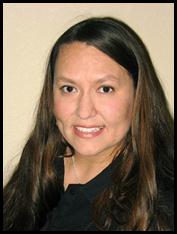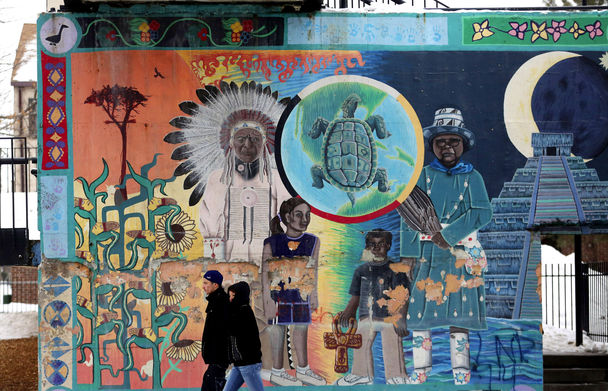Quil Ceda-Tulalip Elementary School wins Cultural Awareness Award
Source: The Herald
The Lakewood High School jazz choir, Swingbeat, took first place for the fourth consecutive year at the Pleasant Hill Jazz Festival, held April 20 in Oregon, the most recent of its accomplishments this year. In addition, Conrad Gruener took home a Festival Soloist Award for his guitar solo for a second year.
Other members of Swingbeat: Mariah Avellaneda, Kylie Bolin, Brent Cross, Ryan Cross, Charles Davis, Andrea Eitner, Cassidy Fry, Kelsi Fry, Kendra Guinn, Jamie Johnson, Megan Knibbe, Aaron Lapointe, Charlotte Mack, Jacob Mack, Megan Mccrorey, Sierra Murdzia, Cara Nordquist, Bryce Shepard, Laena Skiles, Caleb Smith, Ryleigh Stover, Kaley Trapp and Sylvia Wentz.
The choir also performed at the Frank DeMiero Jazz Festival in March, where vocalist Kelsi Fry won a solo award. Earlier, they performed on stage at Disneyland.
Director Katy Trapp said Swingbeat this year was the first vocal jazz group to be selected into KPLU’s School of Jazz, now in its ninth year. The group recently recorded with vocal jazz professional Greta Matassa; a CD will be released by KPLU in May.
Mariner choir enjoys success in Florida
Hard work paid off for members of the men’s, women’s and chamber choirs at Mariner High School in south Everett. All three groups earned first-place, gold medal awards at the Heritage Music Festival in Orlando over spring break and won the choir sweepstakes award. Senior Hector Ruiz also was awarded an individual excellence award.
Choir director Patty Schmidt said the students are now looking forward to accepting an invitation to perform at the National Youth Choir at Carnegie Hall in New York City next year. It will be the second time the group has received such an invitation.
Monroe students take top music honors
Musicians from the Monroe High School instrumental music program won the Sweepstakes Award for Best Instrumental Program at the recent Heritage Music Festival in Seattle, as well as the Adjudicators Award. The Monroe students competed against bands from Washington, Oregon, British Columbia and Alberta, Canada.
In addition, the wind ensemble received the only Gold rating as well as first place, and the symphonic band received a Silver rating and second place in the 3A Concert Band division. Both groups also won Outstanding Band Group trophies. The percussion ensemble also received a silver rating.
Band director Lisa White said the wind ensemble now looks forward to competing by invitation at the national level.
Schools give away 330 books — to parents
Staff members from Monte Cristo and Mountain Way elementary schools in Granite Falls on April 23 gave away 330 free books to local parents to help increase literacy awareness as part of World Book Night.
Monte Cristo multiage teacher Debra Howell received a grant worth $5,000 in free books from the World Book Night organization to participate in the national event. Teachers distributed about 165 books at each school.
“We have a strong focus on children’s literacy in our elementary schools so this is a perfect way to promote adult literacy,” Howell said. “We don’t have a book store in Granite Falls for adults to purchase books so this is just one way for parents to receive a brand new book just for themselves,” she added.
Everett teen selected for German exchange
Maike Zehrung, a senior at Cascade High School in Everett, was one of 25 students in the United States chosen to be part of the Congress-Bundestag Vocational Youth Exchange Program.
The full-scholarship program will allow Zehrung to spend a year in Germany living with a host family and getting hands-on work experience through an internship with a German company.
Zehrung will leave in July for Washington, D.C. for orientation and then to Munich, Germany for an intensive German language course prior to the host family and internship assignment.
Math whiz named district Key Club treasurer
Eric Grewal, a member of Monroe High School’s Key Club, was recently elected treasurer of the Pacific Northwest District Key Club, thanks to his math skills and a successful election campaign.
This is the first time a Monroe Key Club member has been elected to a district office. The district includes four states and two provinces. Key Club is the high school level of Kiwanis International.
In campaigning for the position, Grewal said he used his DECA skills to sell himself and his qualifications. DECA is a high school marketing club. Eric heads to DECA International competitions later this month after placing fourth in business finance at a state competition.
Arts group celebrates book lovers
A reception for winners of the Edmonds Arts Commission “Best Book I Ever Read” poster contest for third-graders was held April 18 in Edmonds Plaza Room.
This year’s Outstanding Award winners, by school:
Chase Lake: Mei Brown, Yocelin Espino, Rileigh Hanson , Nadia Martynenko, Mady Parks and Emily Swank
Westgate: Sara Cambronero, and Cylis Manfredo
Seaview: Cadence Entermille, Myles Heckman, Amanda Ly, Kylie Reynolds andNikki Susanto
Holy Rosary: Nathan Holt, Maya Kidder and Alistair McDonald
Sherwood: Larissa Meyer and Matthew Smith
Maplewood: Tessa Sather and Elizabeth Yockey
For a list of Honorable Mention winners, visit www.edmondswa.gov. Winning posters are on display through May 16 in the Frances Anderson Center, 700 Main St.
Kamiak senior honored by Everett-Mukilteo Rotary
Kevin Baron was named the Kamiak High School March Student of the Month by the South Everett-Mukilteo Rotary Club.
Along with maintaining an impressive GPA, Kevin is involved in Knowledge Bowl, Dramafest and the soccer team, of which he is captain. Kevin also is a National Merit Finalist and the 2013 American Mathematics Contest 12 Winner.
Kevin plans to attend the University of Washington, where he has been admitted to the computer science program.
Lynnwood Rotary gives out scholarships
Each year the Lynnwood Rotary Club provides students with scholarships for their academic and vocational achievements. This year additional funding from the Martha Lake Community Club enabled the Rotary Club to award $27,000 in scholarships.
Nine students were awarded $3,000 scholarships.
Academic scholarships: Arsenia Ivanov (Lynnwood), Katelin Kobuke (Edmonds-Woodway), Lindsay Meany (Holy Names Academy), Caitlin Plummer (Meadowdale), Sophie Shanshory (Edmonds-Woodway), Soren Steelquist (Lynnwood), and Isabelle Yalowicki (Edmonds-Woodway).
Vocational scholarships: Kathryn Lowe (Lynnwood) and Srip Ouk (Edmonds-Woodway).
Mountlake Terrace Elementary granted 42 bikes
Forty-two bikes were delivered to Mountlake Terrace Elementary School this month. The bikes are funded through a federal Safe Routes to Schools grant, which is administered by the state.
The grant was possible through a partnership between the city of Mountlake Terrace, the Cascade Bicycle Club, and the Edmonds School District. The grant also will pay for a new sidewalk in Mountlake Terrace, two trailers full of bikes to expand bicycle education to every elementary and middle school in the Edmonds School District, a free bike helmet for each child at Mountlake Terrace Elementary, a weekly Wheels Club, a Bike Rodeo in May, and a bike safety assembly.
The Edmonds Bicycle Advocacy Group also promoted the program.
Arlington teens attend Mathday
Arlington High School students attended the annual University of Washington Mathday on March 25. Over 1,300 area high school students attended the event, which included seminars, field trips and labs with professors. A featured lecture from biochemistry professor David Baker touched on the topic: “Can Calculations Compete with 3 Billion Years of Evolution?”
Other topics AHS students learned about included atmospheric modeling, different applications of the Gale-Shapley algorithm, and using Twitter to understand population demographics and health, among others.
Young opera talent awarded scholarship
Denná Good-Mojab, 16, of Lynnwood, has been awarded the 2013-14 Hans Wolf Award by the University of Washington School of Music’s Voice Division.
This scholarship is for seniors in the School of Music who are studying vocal performance.
Denná debuted in 2007 at age 10 with the Portland Opera. She has since performed in several productions with the Portland and Seattle Operas, as well as UW Opera Theater, where she played the lead role of Amahl in the 2011 production of “Amahl and the Night Visitors.”
Denná’s junior recital will be held at 7:30 p.m. June 1 at UW’s Brechemin Auditorium. The event is free and open to the public. For more information, see www.facebook.com/DennaGoodMojab.
Griffith inducted into honor society
Marysville resident Joshua Griffith was inducted into the Alpha Chi Honor Society April 20. Griffith is a senior computer science major at Harding University in Arkansas.
The society recognizes the academic excellence of college students nationwide. Selected students fall in the top 10 percent of their class.
Spanish teacher honored by Rotary
Beth Knutsen, Spanish teacher at Lynnwood High School, has been named the Alderwood-Terrace Rotary Club’s Educator of the Month for April. “She is a thoughtful person who manages to convey her deep desire for students to understand the culture of Spanish-speaking countries and the excitement of learning a foreign language,” Principal David Golden said.
Schools honored by state for best practices
Schools receiving 2012 Washington Achievement Awards will be honored at a ceremony on April 30 at Kentwood High School in Covington.
The award is based on the Washington Achievement Index and celebrates schools for overall excellence and special recognition in various subject areas.
Arlington School District: Kent Prairie Elementary (overall excellence and science)
Edmonds School District: Brier Elementary (closing achievement gaps), Challenge Elementary (math and science), Chase Lake Elementary (closing achievement gaps and high progress), Edmonds Elementary (closing achievement gaps), Edmonds Heights K-12 (extended graduation rate), Hazelwood Elementary (high progress), Maplewood Parent Coop (overall excellence and science), Meadowdale Elementary (closing achievement gaps), Meadowdale Middle School (closing achievement gaps), and Seaview Elementary (closing achievement gaps)
Everett School District: Cedar Wood Elementary gifted (overall excellence), Forest View Elementary (overall excellence and science), Gateway Middle School (overall excellence and science), Heatherwood Middle School (overall excellence), Jefferson Elementary (closing achievement gaps and science), Mill Creek Elementary (overall excellence-gifted), Silver Lake Elementary (overall excellence, math, science and high progress), and Woodside Elementary (science)
Lake Stevens School District: Hillcrest Elementary (closing achievement gaps and high progress)
Marysville School District: Marysville Coop Program (science) and Marysville Middle School (closing achievement gaps)
Monroe School District: Sky Valley Education Center (extended graduation rate)
Mukilteo School District: Columbia Elementary (closing achievement gaps), Fairmount Elementary (science), Kamiak High School (overall excellence and math), Mariner High School (language arts), Odyssey Elementary (overall excellence and science)
Snohomish School District: Glacier Peak High School (extended graduation rate)
Sultan School District: Sultan Elementary (closing achievement gaps and science)
WEA announces award winners
The Washington Education Association announced the winners of its Human and Civil Rights Awards on April 25 at its annual convention in Bellevue.
Winning one of the Cultural Awareness Awards was the entire staff of Quil Ceda-Tulalip Elementary School in Marysville for integrating Native culture in academics and, in the process, outperforming some 1,700 other schools across the country that receive Federal School Improvement Grants.
The Community Service Award went to the English Language Learners Family Literacy Program in the Edmonds area for the depth of the program and the numbers it serves. The program serves more than 600 parents, offers free English classes, on-site child care services and homework support.





 Apache Superhero James Proudstar known as Warpath
Apache Superhero James Proudstar known as Warpath










